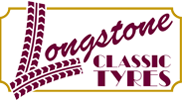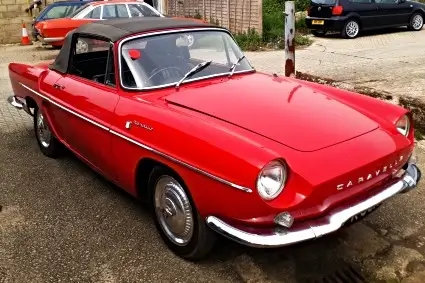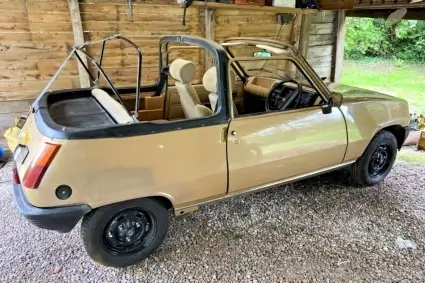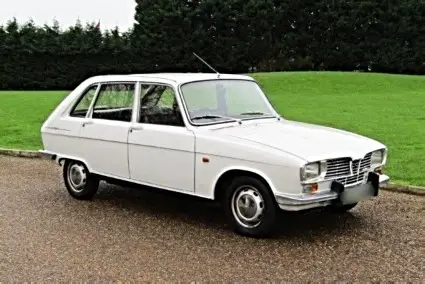-
- Renault 15/17 Tyres
- Renault 16 Tyres
- Renault 18 Tyres
- Renault 20/30 Tyres
- Renault 4 Tyres
- Renault 4 CV Tyres
- Renault 5 Tyres
- Renault Caravelle Tyres
- Renault Dauphine Tyres
- Renault Floride Tyres
- Renault Fregate Tyres
- Renault Juvaquatre Tyres
- Renault Mona Celta 4 Tyres
- Renault Mona-Quatre Tyres
- Renault Monastella Tyres
- Renault Nervasport Tyres
- Renault Ondine Tyres
- Renault Primastella Tyres
- Renault Primaquatre Tyres
- Renault R8 Tyres
- Renault R8 Gordini Tyres
- Renault 10 Tyres
- Renault Vivasport Tyres
- Renault Vivastella Tyres
Renault Tyres
Classic Renault Tyres
On the following pages, Longstone Classic Tyres give classic tyre fitment recommendations for Renault cars.
If your Renault is not listed, don't panic! Please give us a call on:
01302 711 123
or
Email: sales@longstonetyres.co.uk
Vintage Renault Tyres
Longstone Tyres can provide tyres for across the whole Renault range, from the popular Dauphine to the more executive Renault Frégate & Renault 20/30.
Renault Tyres
The following list are our recommendations for Renaults:
- 135 SR 15 Michelin ZX for a Ondine, Dauphine, R8 & R8 Gordini.
- 145 SR 15 Michelin XZX for a Dauphine, Gordini, Floride & Caravelle.
- 165 SR 400 Michelin X for a Frégate.
- 155 HR 13 Michelin XAS FF for a R15TS, R15DTL & R17TL.
- 165 HR 13 Michelin XAS FF for a R17TS, R17, Gordini & R18 & R20.
- 190/65 HR 390 Michelin TRX for a R30TX.
Renault History
Louis Renault and his brothers Marcel and Fernand created the Renault firm on February 25, 1899, as Société Renault Frères. Louis was a brilliant, ambitious young engineer who had already created and produced numerous prototypes before joining forces with his brothers, who had polished their business talents while working for their father's textile enterprise. While Louis was in charge of design and manufacturing, Marcel and Fernand were in charge of managing the company. On December 24, 1898, the first Renault Voiturette was sold. Renault began producing its own engines in 1903, having previously obtained them from De Dion-Bouton.
The first large-scale sale occurred in 1905 when the Société des Automobiles de Place purchased Renault AG1 automobiles to form a taxi service. During World War I, the French military employed these trucks to carry troops. Renault had produced a sizable proportion of London and Paris cabs by 1907. In 1907 and 1908, Renault was the best-selling foreign car brand in New York. In 1908, the firm manufactured 3,575 units, making it the largest vehicle producer in the country.
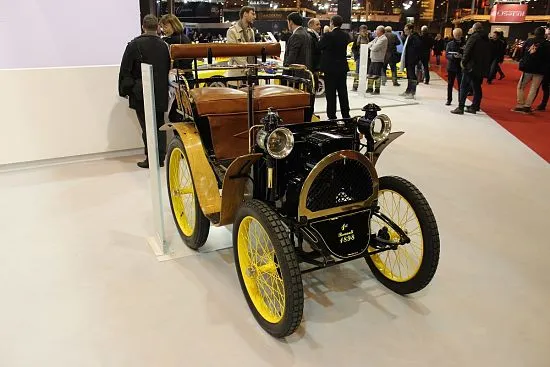
When Fernand retired for health reasons in 1906, Louis acquired full management of the firm as the sole remaining brother. When Fernand died in 1909, Louis took over as sole proprietor and renamed the firm Renault Automobile Company. During the pre-war years, Renault produced buses and commercial freight trucks. The company's first commercial vehicle was debuted in 1906. During WWI, it expanded into ammunition and military aircraft engines. Prior to WWI, vehicles had a characteristic front design produced by putting the radiator behind the engine, resulting in a so-called "coal scuttle" bonnet. Only in 1930 were all models equipped with a front-mounted radiator. In 1925, the bonnet badge was redesigned from a circular shape to the now-famous diamond shape.
Cars were designed and manufactured with caution. Beginning in 1927, the Renault Vivasix, model PG1, was available as the "executive sports" variant. Lighter weight manufactured steel bodywork driven by a 3,180 cc six-cylinder engine gave a recipe that lasted until WWII. The new three spring rear suspension was adopted in the 1927 6 cylinder Grand Renault models NM, PI, and PZ, which greatly increased stability, which was required because some cars now exceeded 90 mph. The straight 8-cylinder Reinastella was debuted in 1929, and the line was expanded to include the Suprastella in 1939. Kellner, Labourdette, J. Rothschild et Fils, and Renault bodies were among the coachbuilders. Renault closed automobile bodies were frequently finished with inside woodwork by Rothschild.
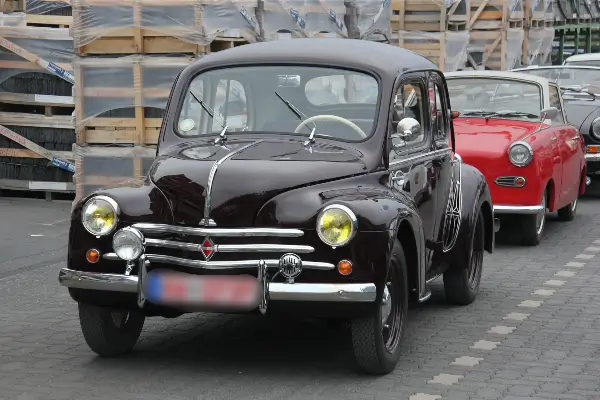
The Grand Renaults were constructed with a significant proportion of aluminium. The engines, brakes, gearboxes, floor and running boards, as well as all external body panels, were entirely made of aluminium. Citroen eclipsed Renault as France's largest vehicle manufacturer in the late 1920s and early 1930s. Citroen vehicles were more inventive and popular at the time than Renaults. However, by the mid-1930s, the French manufacturers had been impacted by the Great Depression. Renault was able to offset losses initially through its tractor, railroad, and weapons industries, but Citroen declared bankruptcy and was eventually bought by Michelin. Renault regained its status as the world's largest automaker, a status it would hold until the 1980s.
After France surrendered in 1940, Louis Renault declined to manufacture tanks for Nazi Germany, which gained possession of his plants. Renault built trucks instead of tanks while producing the Renault UE tank for the Allies. The British Royal Air Force (RAF) unleashed 235 low-level bombers from the Île Seguin, Billancourt, Paris factory on March 3, 1942, the most ever directed against a single target during the war. A total of 460 metric tonnes of bombs were thrown on the facility and surrounding region, inflicting substantial damage as well as significant human deaths. Renault intended to restore the factory as soon as possible, but bombardments began a year later, on April 4, 1943, this time supplied by Americans, and on September 3 and 15, 1943.
During the war, Louis Renault created the rear engine 4CV, which was released in 1946. Soon after, Renault released its flagship model, the 2-litre 4-cylinder Renault Frégate (1951–1960). The 4CV competed with automobiles like the Morris Minor and Beetle, and its sales of over 500,000 secured continued manufacturing until 1961. Renault next introduced two successful automobiles: the Renault 4 (1961–1992), a practical rival to the Citroen 2CV, and the Renault 8. Following the success of the R8, the bigger rear-engined Renault 10 was the last rear-engined Renault. The company's breakthrough began with the more contemporary and premium Renault 16, a revolutionary hatchback introduced in 1966, and was followed by the smaller Renault 6.
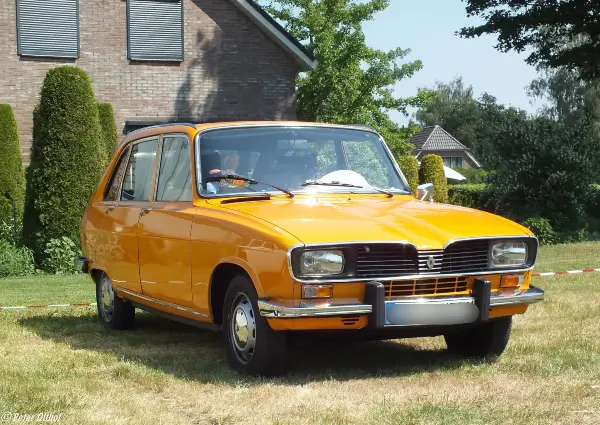
The 1960s had been a decade of ambitious growth for Renault: a few months previously, in October 1969, the company had introduced the Renault 12. The four-door Renault 12 model was positioned between the Renault 6 and the Renault 16. The model was a hit. Renault built 1,055,803 automobiles in 1970, the first year in which it produced more than a million cars in a single year. In anticipation of the 1973 energy crisis, the company's tiny and inexpensive Renault 5 model, introduced in January 1972, was another triumph. In the late 1960s and early 1970s, the business created subsidiaries in Eastern Europe, most notably Dacia in Romania, and South America, as well as agreements for technological collaboration with Volvo and Peugeot. Renault collaborated with AMC in North America, financing AMC operational cash and purchasing a minority 22.5 per cent ownership in the firm in late 1979.
Renault boosted its engagement in motorsport in the late 1970s and early 1980s, with revolutionary technology such as turbochargers in their Formula One vehicles. Beginning in 1980, Renault's Head of Engines, Georges Douin, oversaw the introduction of turbochargers in many engines in the Renault range. Renault deepened its partnership with Volvo in 1990 by establishing an arrangement that allowed both firms to decrease vehicle development and purchase costs. On its debut in 1981, the Renault 9, a compact four-door family saloon, was named European Car of the Year. It did well in France, but it was soon surpassed by its sister vehicle, the Renault 11 hatchback, as the hatchback body type became more popular on cars of this size.
Renault benefited from Volvo's competence in the upper market sectors, and Volvo benefited from Renault's designs in the low and middle-market segments. In the early 1990s, a revitalised Renault produced successful new automobiles, supported by an increased marketing push in European sectors, such as Renault 5 successor, the Clio, in May 1990. Following Volvo's exit, Renault sought a new partner to deal with a sector that was consolidating. Negotiations with BMW, Mitsubishi, Nissan, PSA, and others resulted in a collaboration with Nissan, whose discussions with Daimler had halted. The Renault–Nissan Alliance, signed on March 27, 1999, is the first of its sort uniting a Japanese and a French firm, incorporating cross-ownership. Renault earned a reputation for unique, eccentric design in the twenty-first century. The Laguna and Mégane's second-generation featured aggressive, angular styling that proved to be popular. The Renault brand continues to be revered to this day.
